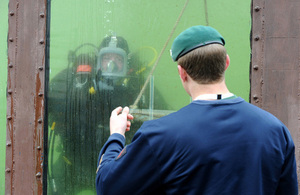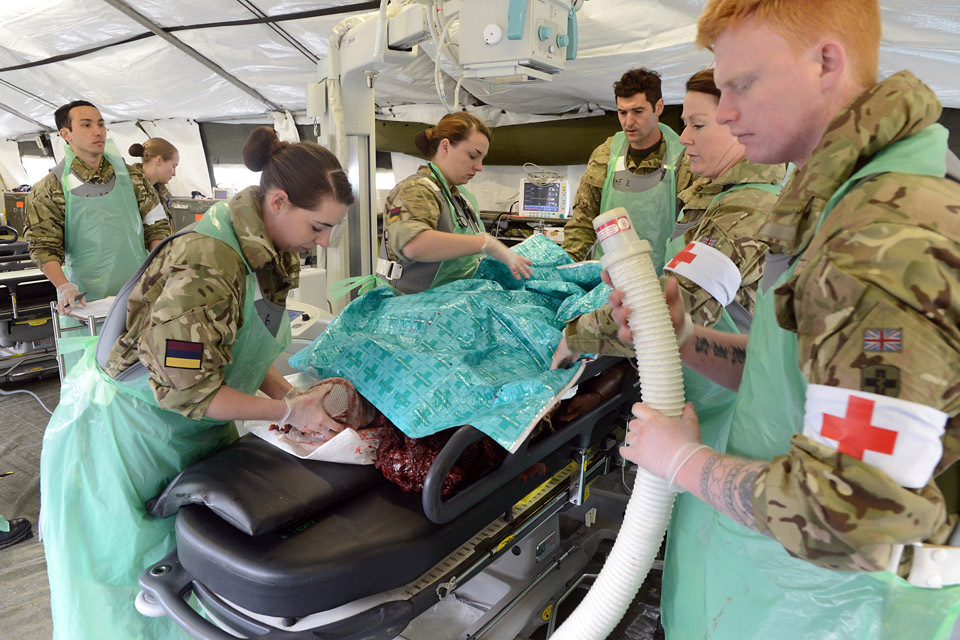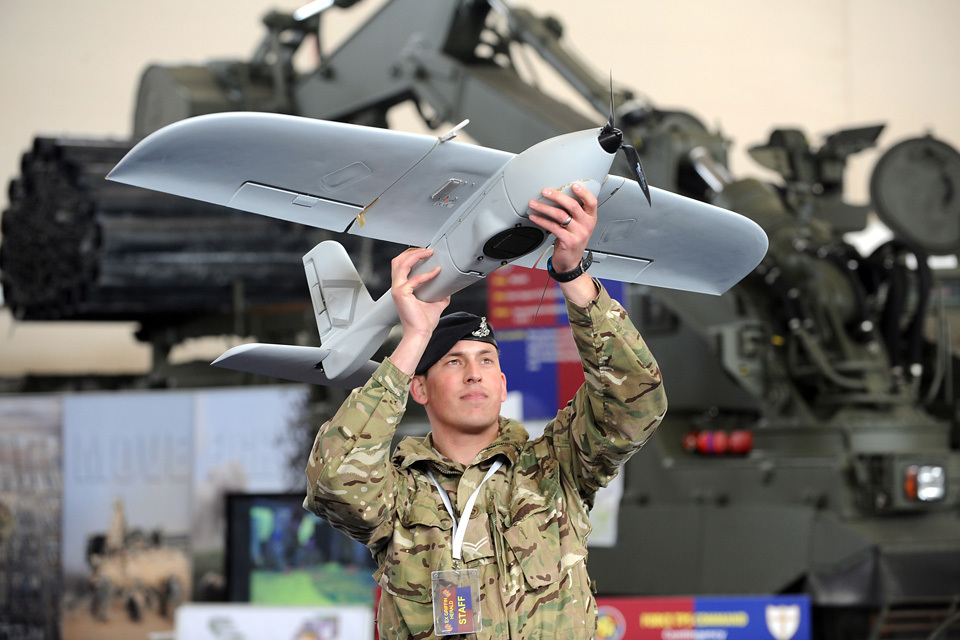Heralding the arrival of Force Troops Command
The army showed off its new command at Upavon airfield in Wiltshire yesterday, during Exercise Griffin Herald.

A British Army diver in a tank during a demonstration at Upavon airfield [Picture: Richard Watt, Crown copyright]
More than 40 national and regional news teams turned up to see Force Troops Command (FTC) set out its stall as part of the 6-day-long interactive exhibition.
The media were treated to live demonstrations, including the always popular military working dogs apprehending insurgents and sniffing out detonators, and static displays which showed the huge range of capability that FTC will be responsible for providing.
Exercise Griffin Herald was a chance for 115 units and FTC headquarters to come together en masse for the first time to illustrate how they will work together and as discrete elements, providing the combat, command, communications and specialist support that the British Army will need in the future.

A fully operating field hospital was set up on the old runway at Upavon airfield [Picture: Richard Watt, Crown copyright]
Force Troops Command is the first fully integrated regular and reserve formation, with units based nationwide. The exhibition demonstrated that the army is already clearly benefiting from this blend of military and civilian experience which harnesses the skills, knowledge and expertise of generalists and specialists from a range of backgrounds.
To recognise the role that reservists play alongside their regular colleagues, a day of the exhibition will be dedicated to reservist employers to come along and see for themselves the contributions that their employees are making on behalf of the nation.
FTC launches on 1 April as the first major implementation of Army 2020. The new command, with its headquarters in Upavon, brings together the specialists with the skills required to facilitate the preparation and delivery of operations at home and abroad.
Delivering combat, command and specialist support, the 36,000 troops of FTC comprise the largest of the army formations, essentially one-third of the whole force. Together, their purpose is to enable deployment on operations, support the fulfilment of standing military commitments and ensure the effective delivery of training in the UK and overseas.

Military working dogs demonstration [Picture: Richard Watt, Crown copyright]
Welcoming the media, Major General Tim Radford, General Officer Commanding Force Troops Command, said:
In 2009 I had the privilege of being the commander of Task Force Helmand. I saw first hand how much soldiers relied on things such as intelligence, logistic support, medical provision and fire power; without all those enablers they could not have prevailed.
FTC will make sure that all those capabilities will be looked after effectively and properly under a single command.
To showcase how this new approach recognises the strength of individual assets, the exhibition breaks the skills and specialisms of the units into a number of families called ‘bubbles’.
In the ‘contingency bubble’ exhibits included the support given at various levels by the Royal Signals, the ‘resilience bubble’ demonstrated capabilities such as major crime scene investigation, and the ‘upstream capacity-building bubble’ included such specialisms as defence cultural awareness.
There was also a field hospital and a display of working dogs which stand alone as key assets within the command. Grouping FTC’s capabilities in this way illustrates how the various elements of the formation will deliver their unique skill sets to the best advantage.

A soldier of the Royal Artillery with a Desert Hawk 3 unmanned air system [Picture: Richard Watt, Crown copyright]
Major General Radford said:
Force Troops Command is the enabler which brings everything together. So the analogy would be a 3-legged stool and we are one of the legs; if we are not there that stool will fall over.
Bringing all the specialists together means that we can prioritise and make it much more efficient by delivering packages of expertise into an operational area.
Over the next few days, units from across the army have the opportunity to see how FTC will support them on future operations.